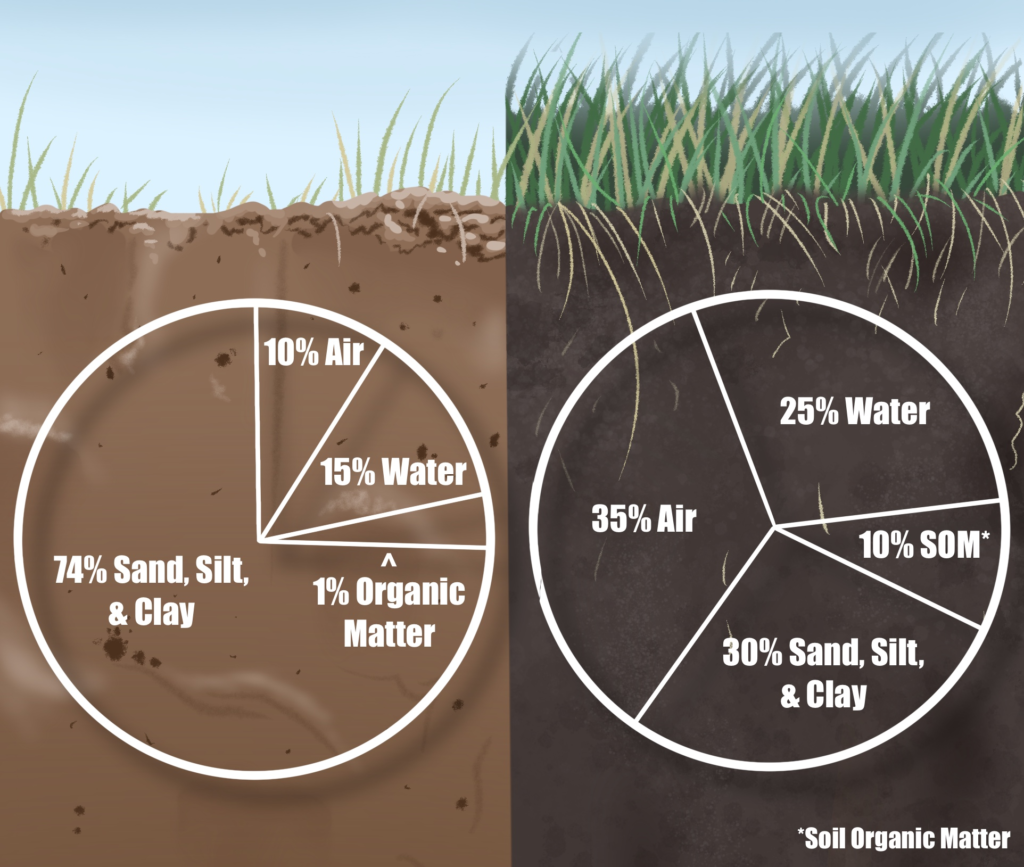In the dog days of summer, shopping at a local farmers’ market feels like visiting a lush oasis – especially if you live in a neighborhood otherwise hemmed in by grocery stores owned by the Weston family. The rows of seasonal produce bursting with colour certainly beat fluorescent lighting and products picked prematurely and shipped halfway around the world.
If you’ve explored local markets over the past few years, you may have run into food that was grown using regenerative agriculture – a collection of sustainable practices intended to undo the soil damage caused by typical farming. Regenerative agriculture comes with a whole host of benefits, climate and otherwise. Crops grown regeneratively draw carbon out of the air, appear to be more nutritious, improve biodiversity, and because healthy soil can absorb and hold more water than dense, over-farmed soil, regenerative crops are more drought-resistant and can even prevent flooding. In short, it’s the sort of farming we need if we hope to reduce Canada’s agricultural carbon footprint and help us navigate some of the impacts of a changing climate.

“We’ve been destroying soil for about 10,000 years, and finally we’ve figured out how to reverse the process,” said Blain Hjertaas during the recent Climate Legacy webinar on Regenerative Agriculture. Hjertaas is third-generation farmer with 49 years of experience, 25 of them growing regeneratively. As a part-time holistic management educator and consultant with Understanding Ag, Blain is seeing regenerative agriculture grow quickly, both in the number of farmers getting onboard, and in the push to formally label food grown regeneratively.
Hjertaas hopes that once formal labeling is in place, certified regenerative food will start showing up on more store shelves. But in the meantime, how can someone who wants to buy healthier, more climate-friendly produce support this growing movement?
Mapping out Regenerative Farmers across Canada
Click here to open Régénération Canada’s interactive farm map on their website.
During last month’s webinar, our speaker Dana Penrice shared an incredibly useful farm map created by Régénération Canada. It tracks regenerative farms across the country. By opening the map and selecting a farm, then clicking ‘read more’, you can learn about the farm’s products (some offer workshops, tours, or even overnight stays), its regenerative practices, and most importantly, how to buy produce from that specific farm.
But what if you live in a large city, and don’t have the time or transportation needed to visit a rural farm? Régénération Canada’s farm map does include contact information for the listed farms, so a good first step could be emailing a farmer you’re interested in buying from to see if they’re selling in your area.
Accordingto Hjertaas, another good option is visiting local farmers’ markets and simply asking vendors about their growing process. If you come prepared with even surface-level knowledge of regenerative practices, including reduced tilling, or the use of cover crops or perennial crops, you may be able to find regenerative farmers selling in your own neighborhood. Markets also provide a fantastic opportunity to share positive feedback with farmers, something that isn’t possible in a supermarket or other setting far away from those doing the growing.
“Positive feedback to us – saying ‘that was the best steak I’ve had or the best tasting cob of corn’ – helps us know that we are doing good,” says Hjertass. “From working with farmers quite often, I hear them say that’s the most satisfying part of the job.”
By buying from regenerative farmers and providing positive feedback, we can help this young, climate-friendly agricultural practice continue to grow. Hjertass says that the efforts of climate and nutrition-conscious consumers, combined with regenerative farmers advocating for formal labeling, could help propel regenerative farming into the mainstream within the next decade.
Although still in their infancy, pushes for labeling have been significant, with programs like Regenefied and Ecological Outcome Verification gaining momentum. If this momentum continues, it’s easy to imagine that in a few years we’ll be able to choose regenerative produce on grocery store shelves right alongside organic options. Canada’s climate, soil health, and biodiversity will thank you for it.
Learn More About Regenerative Agriculture:

